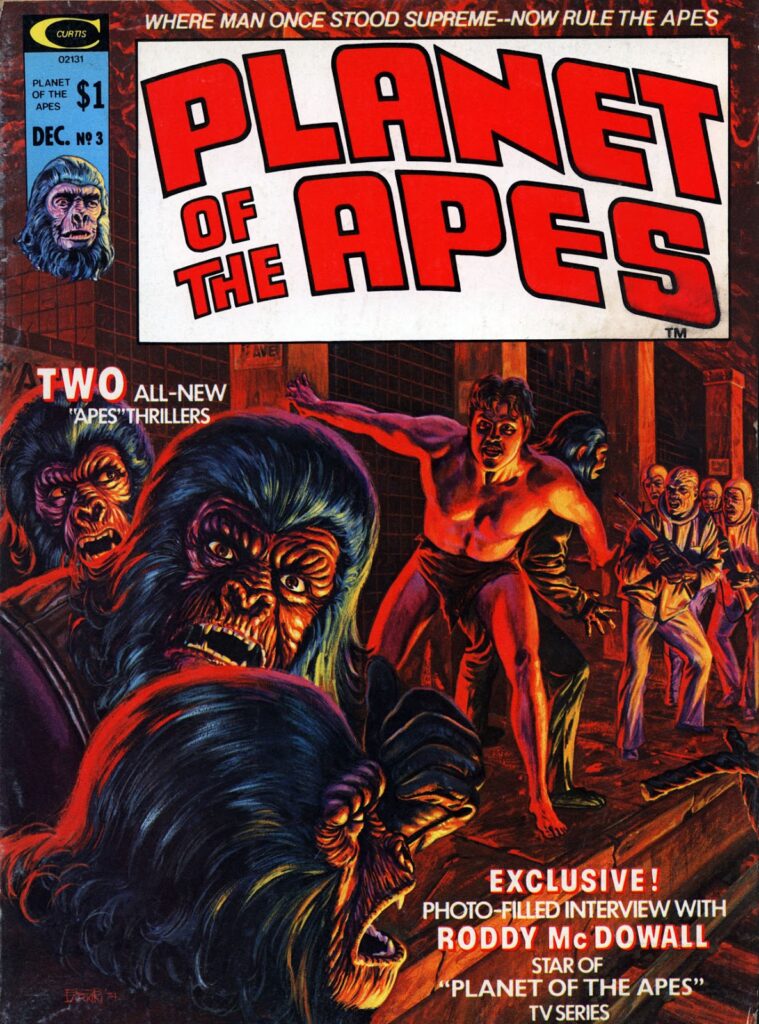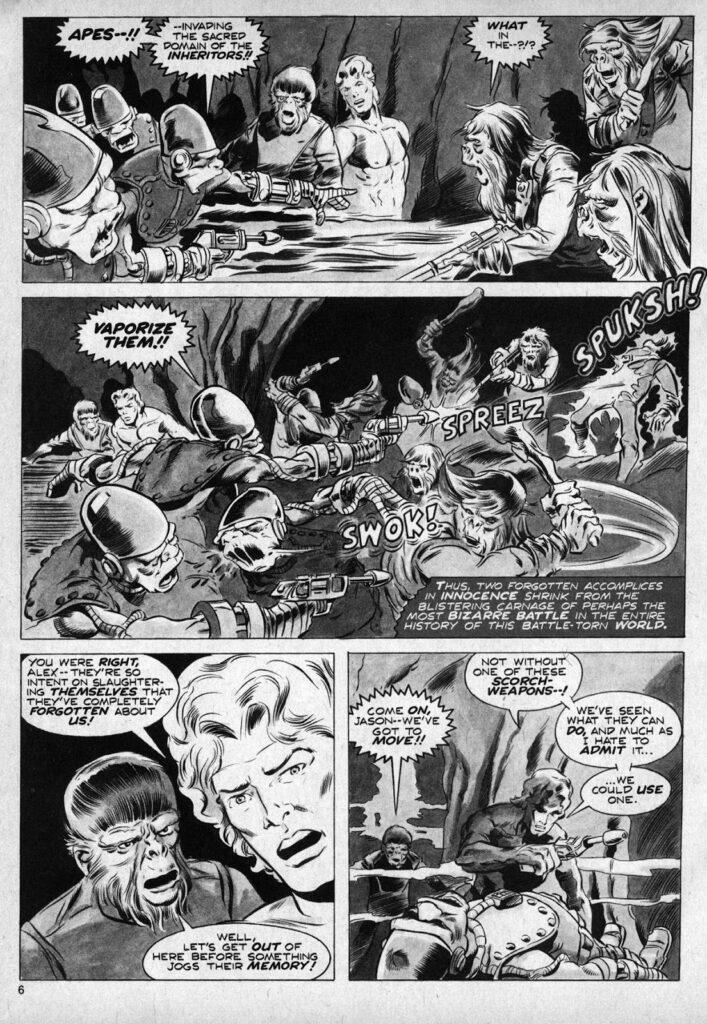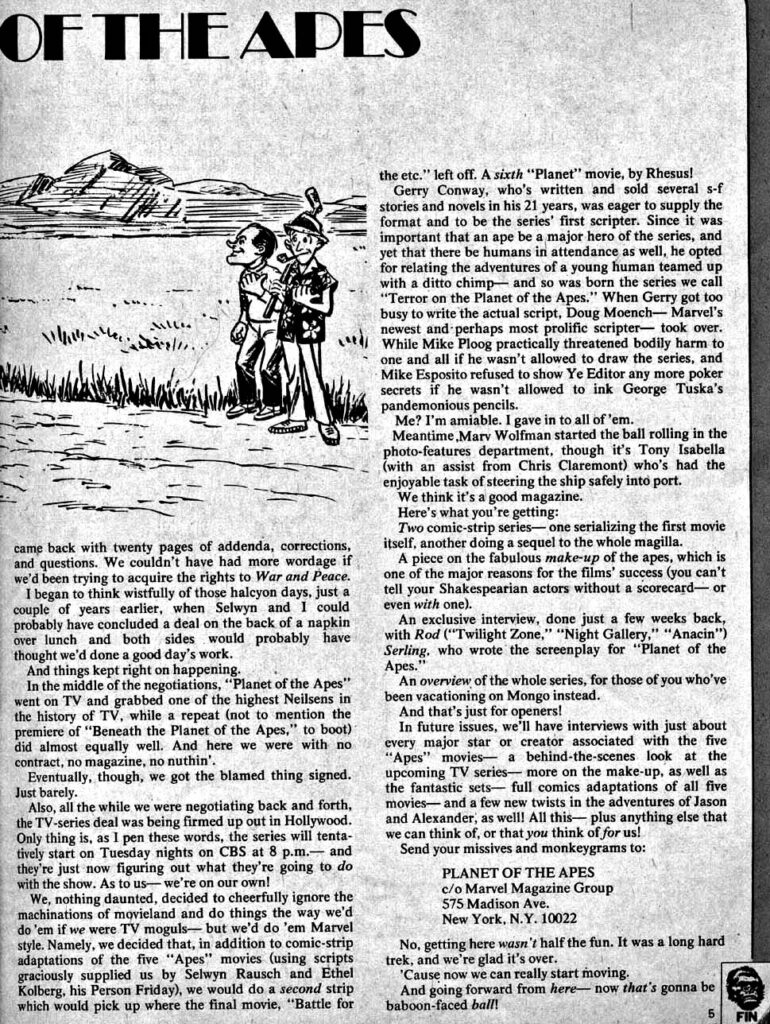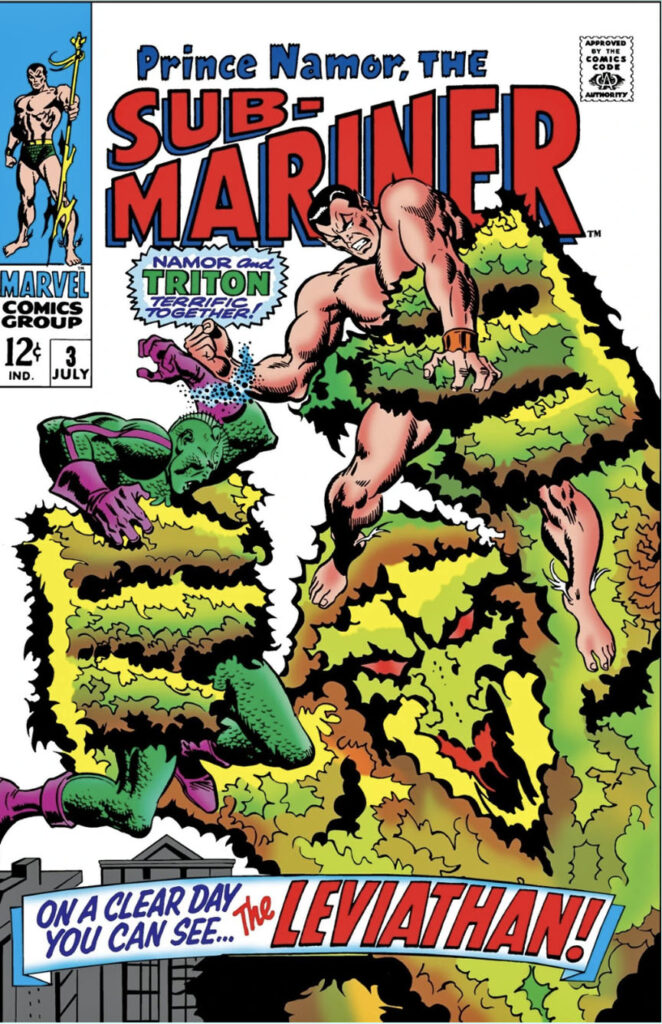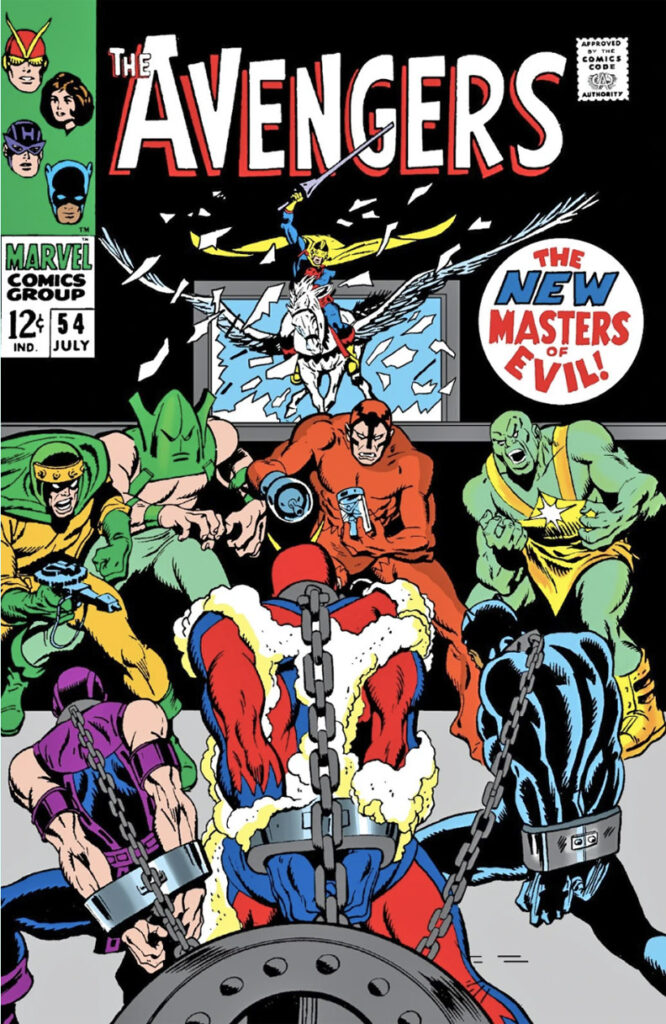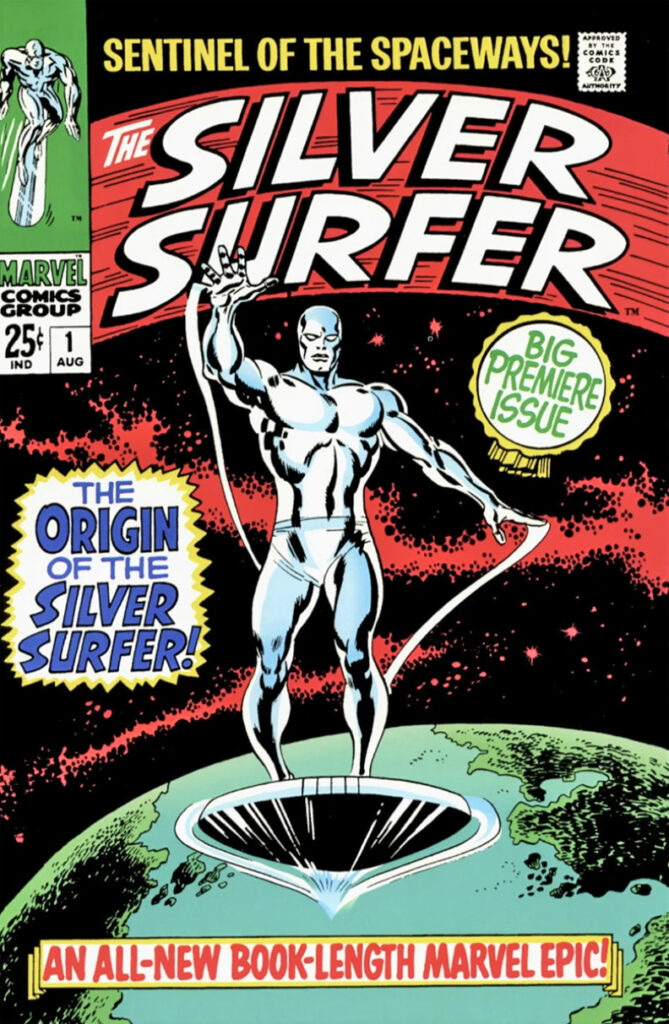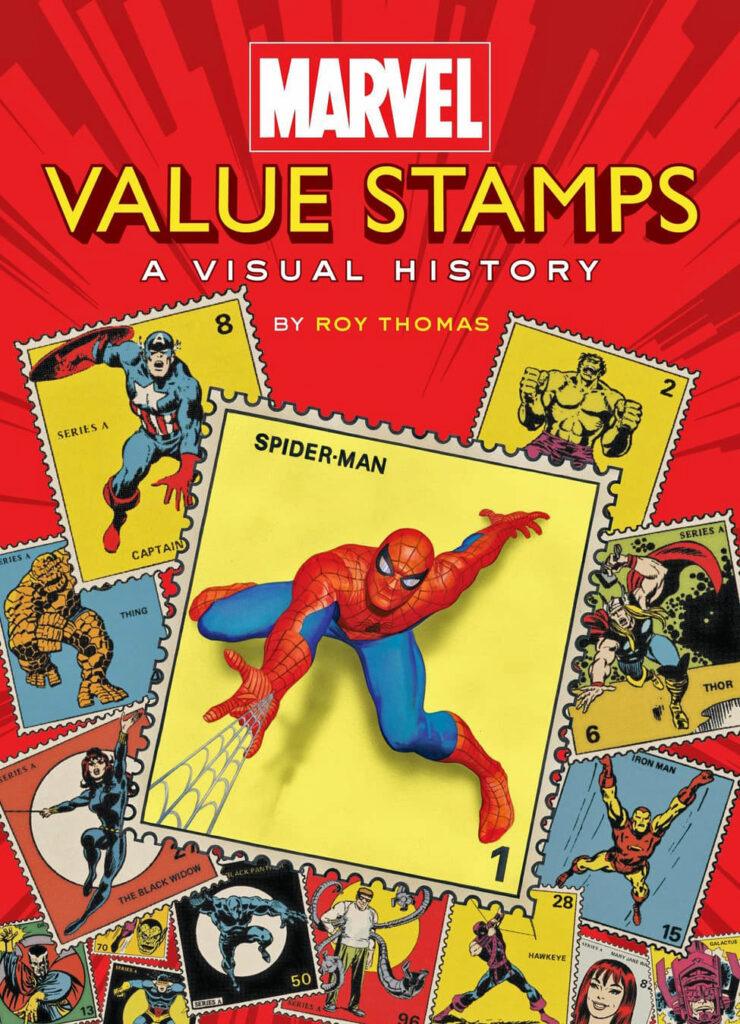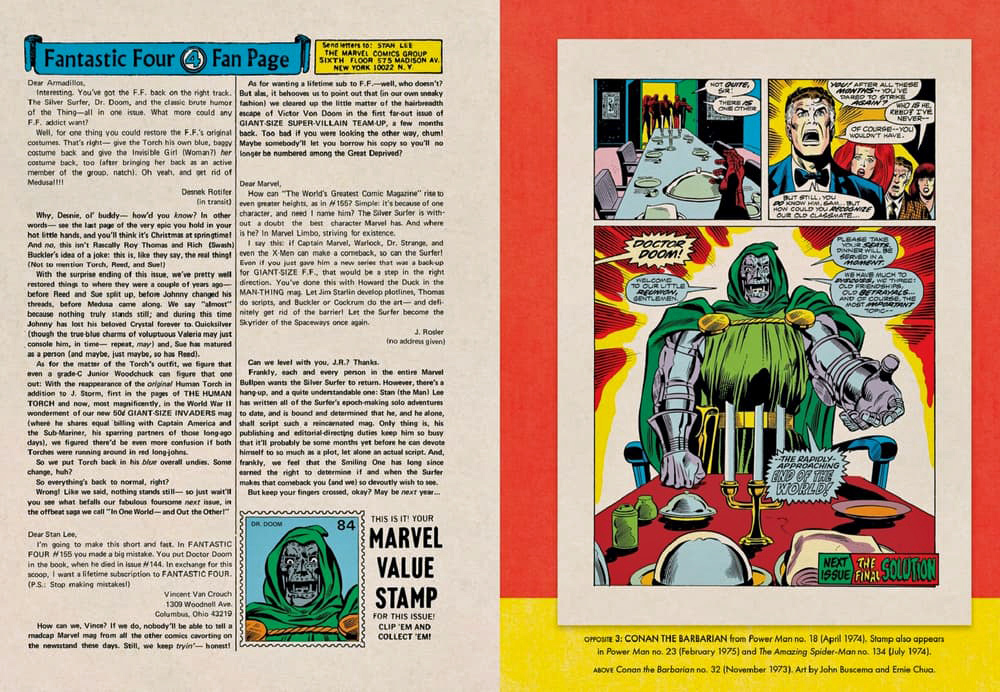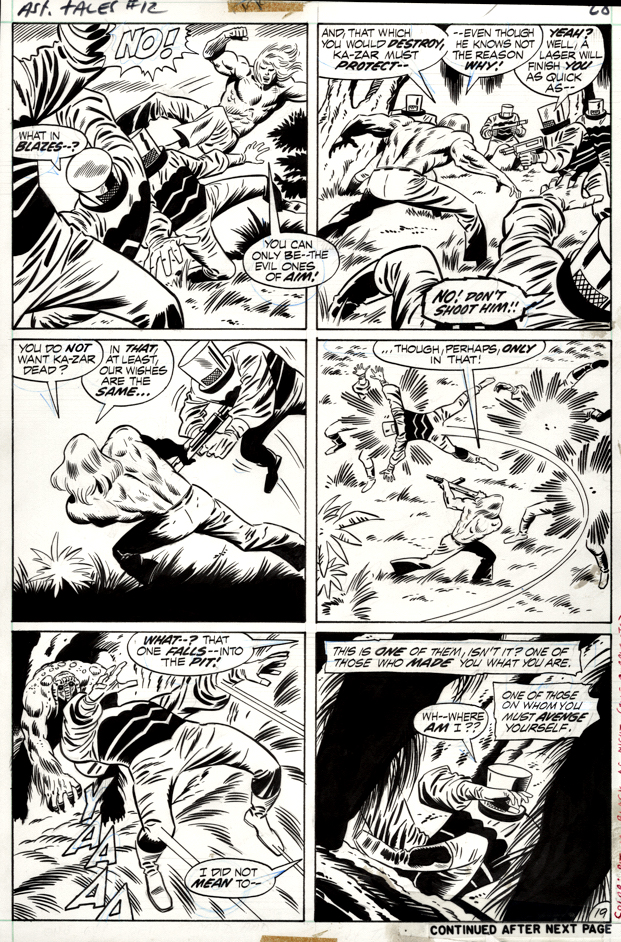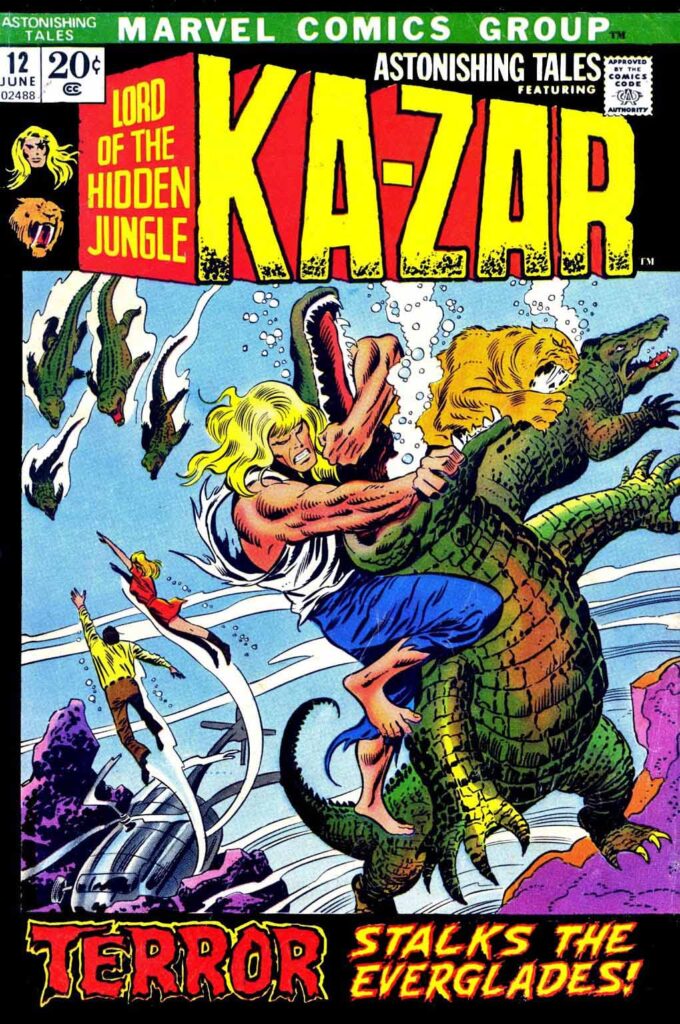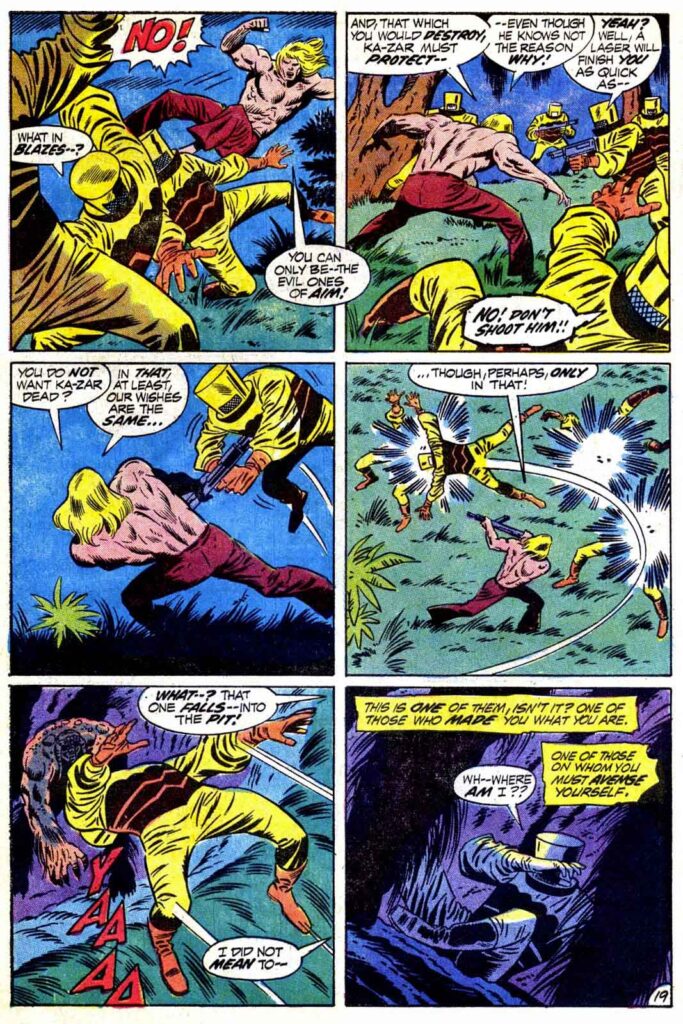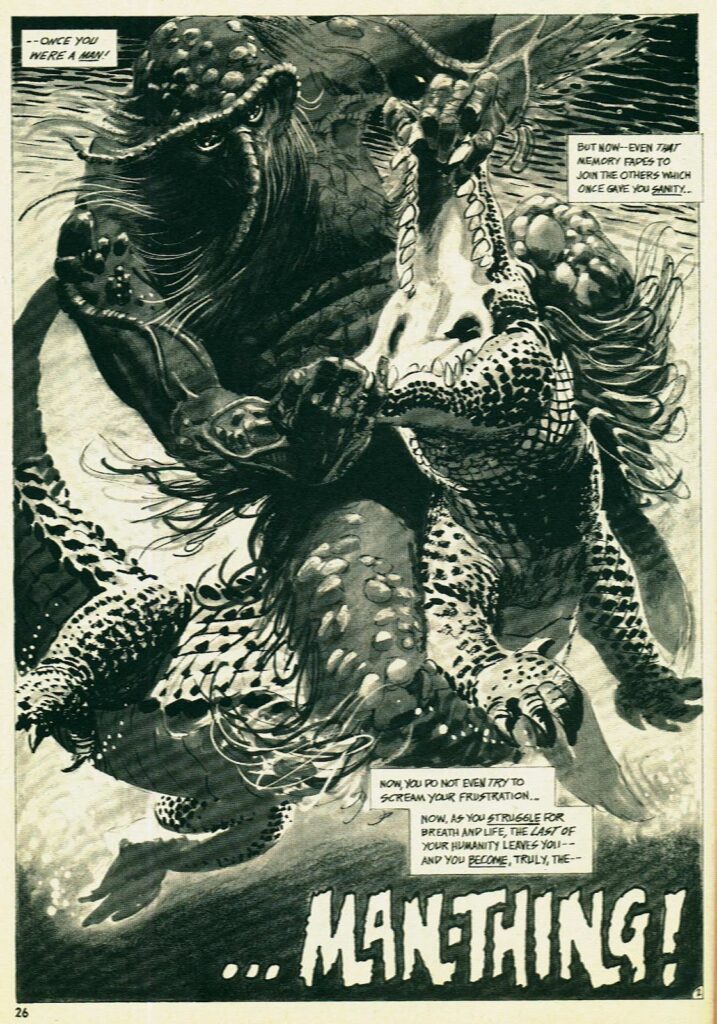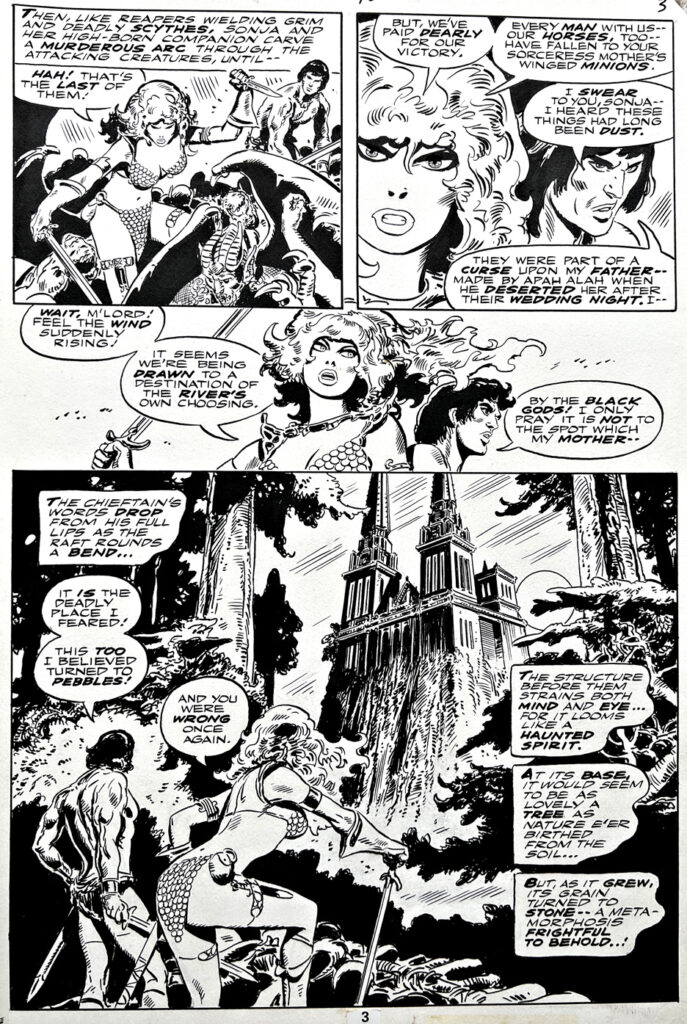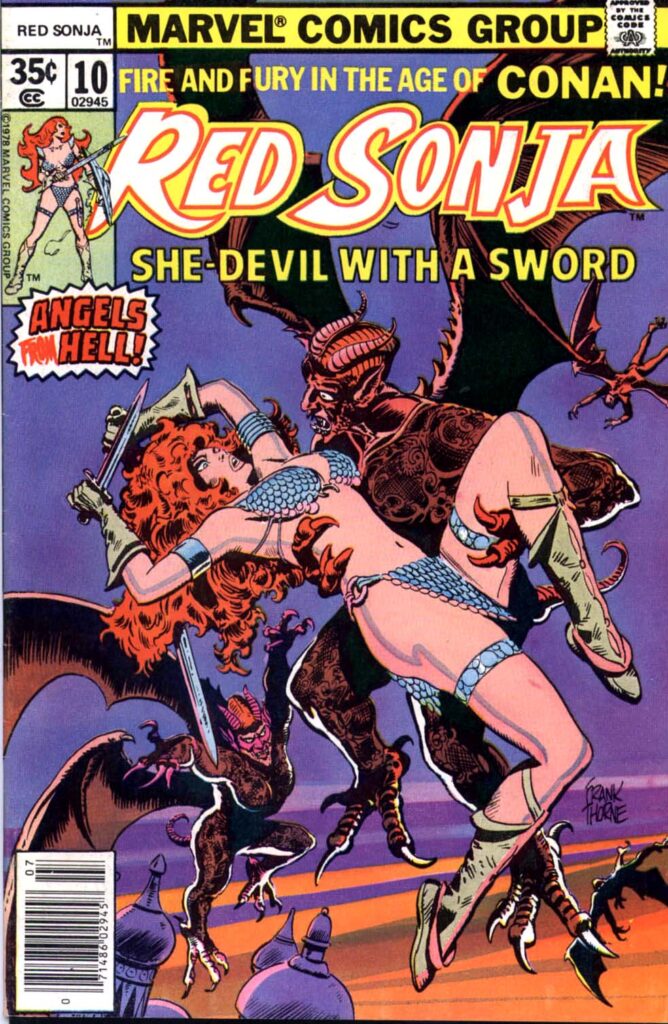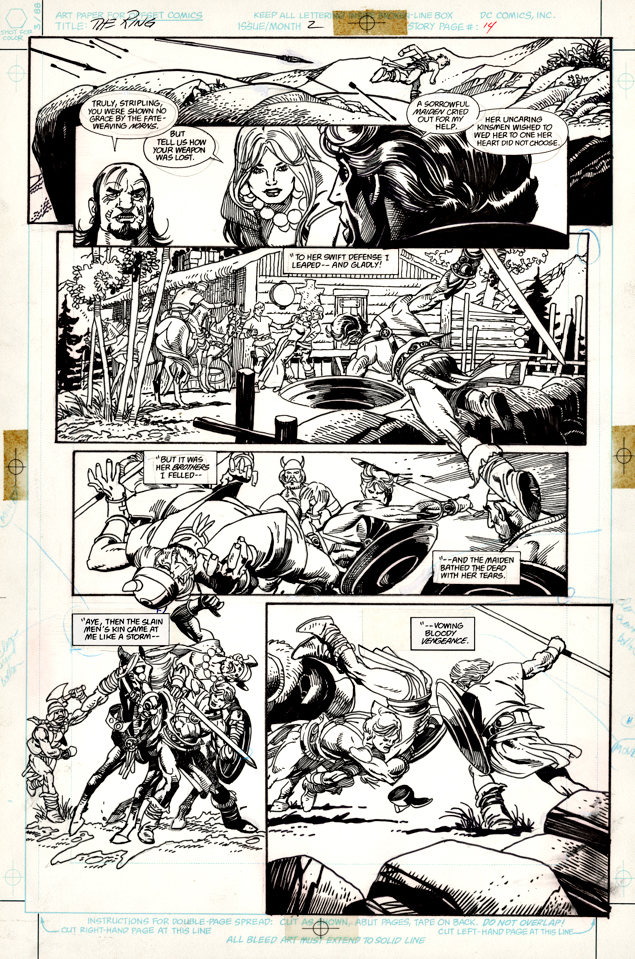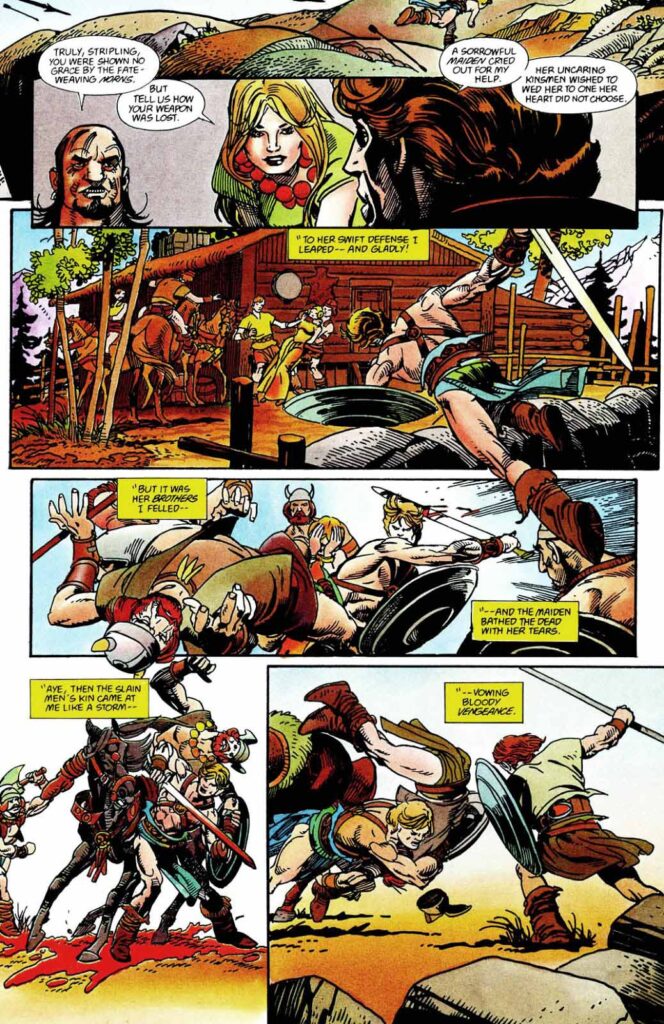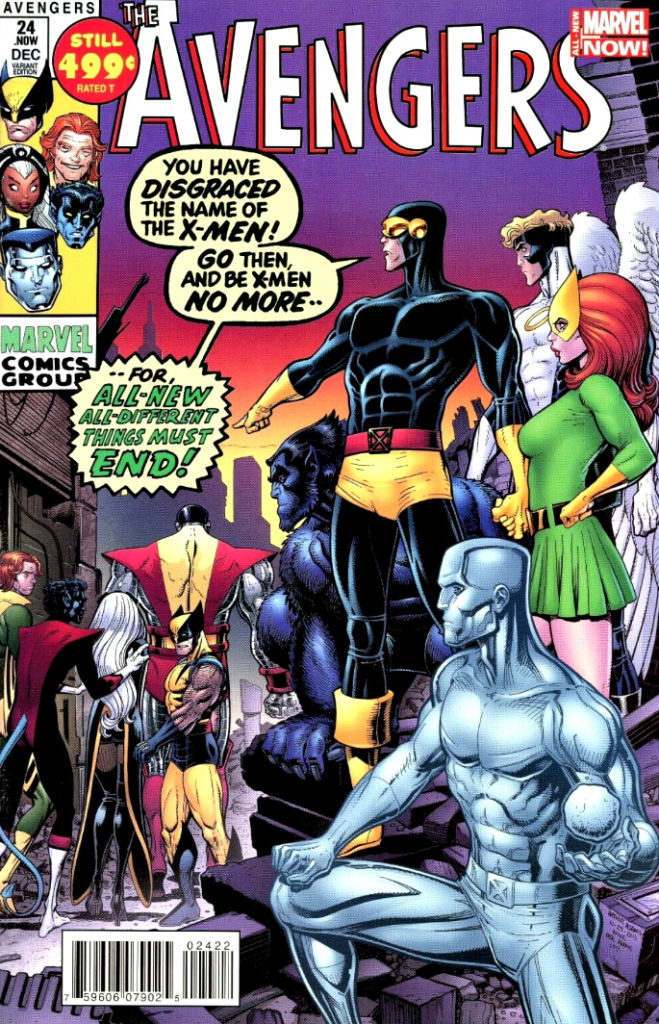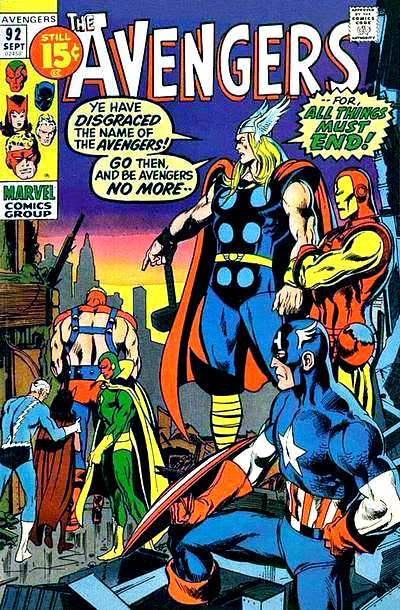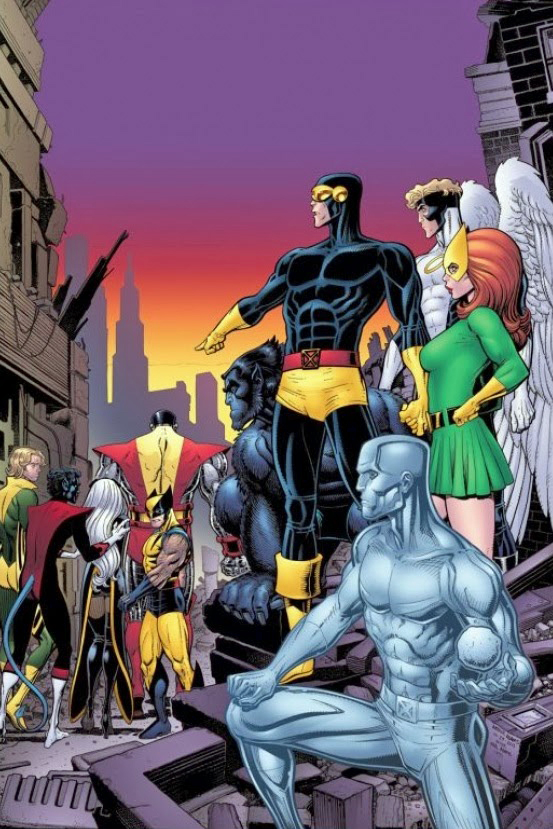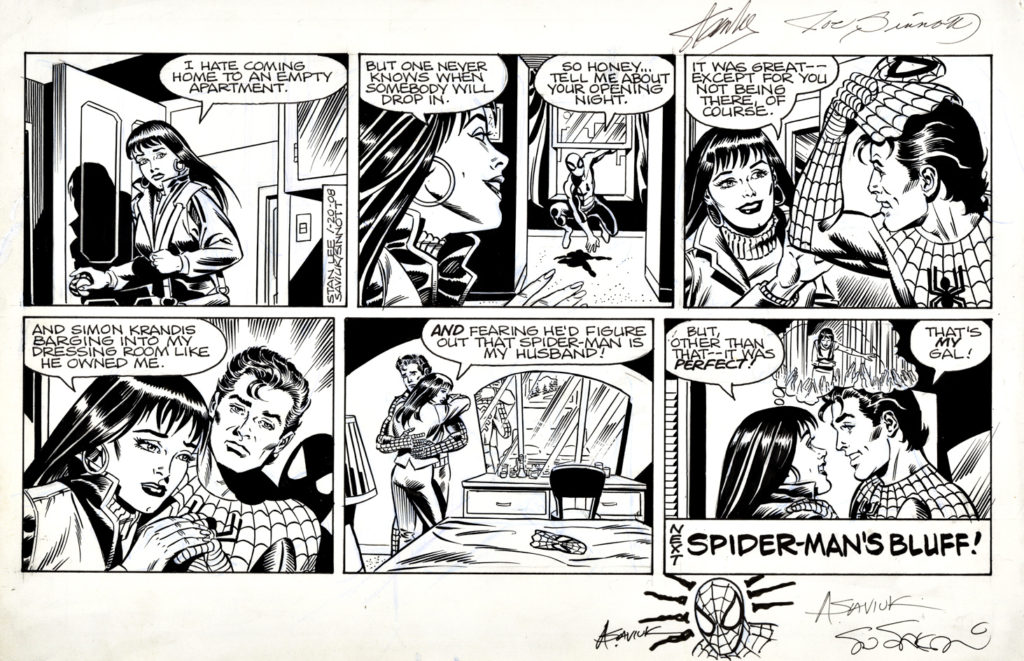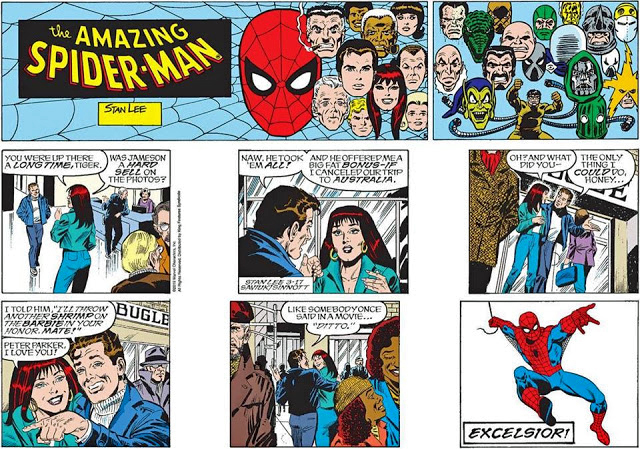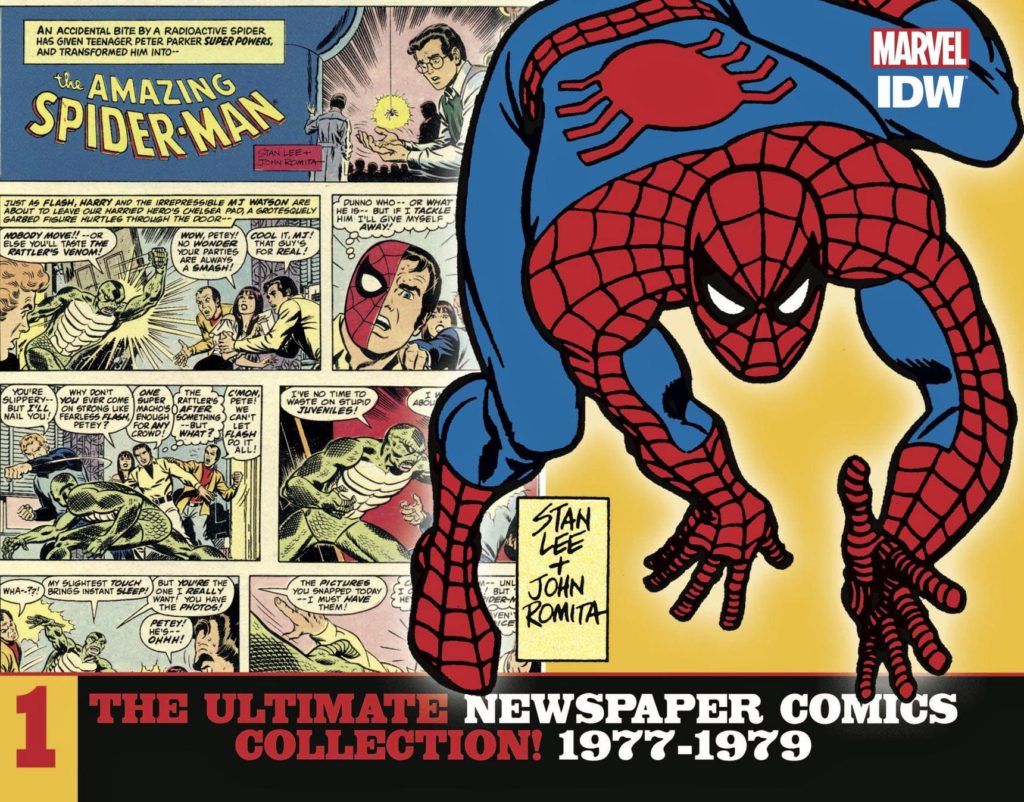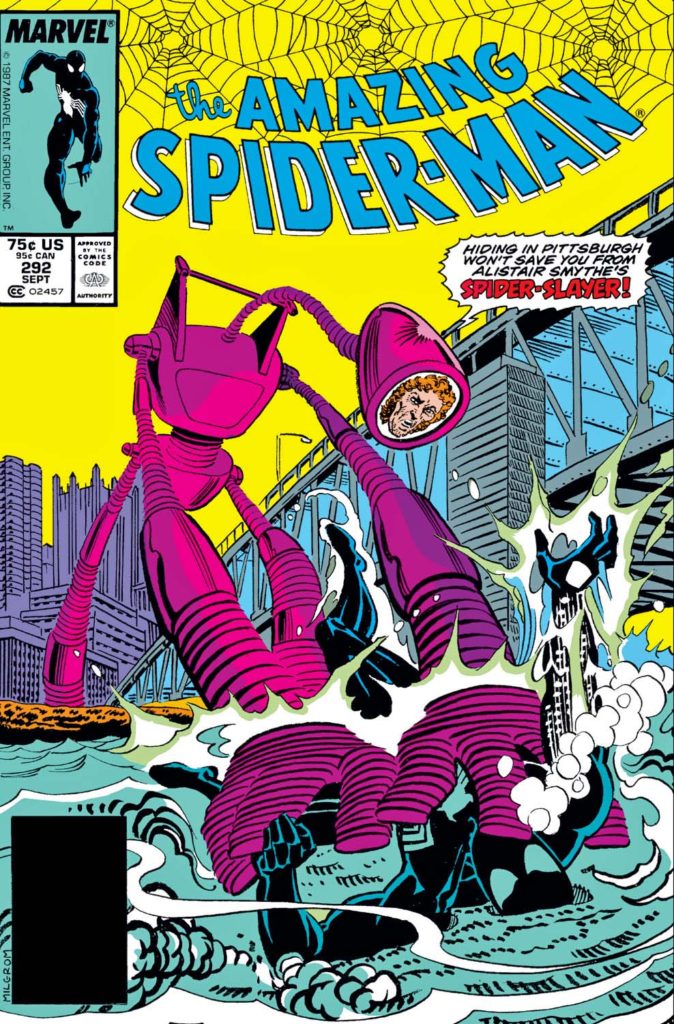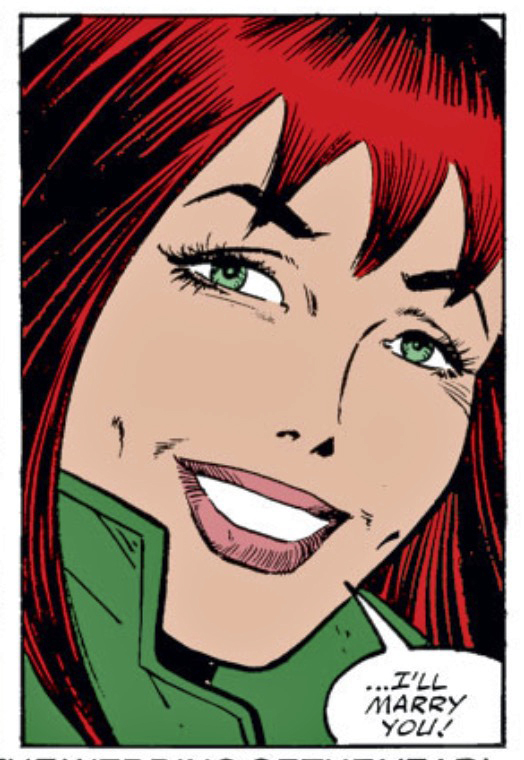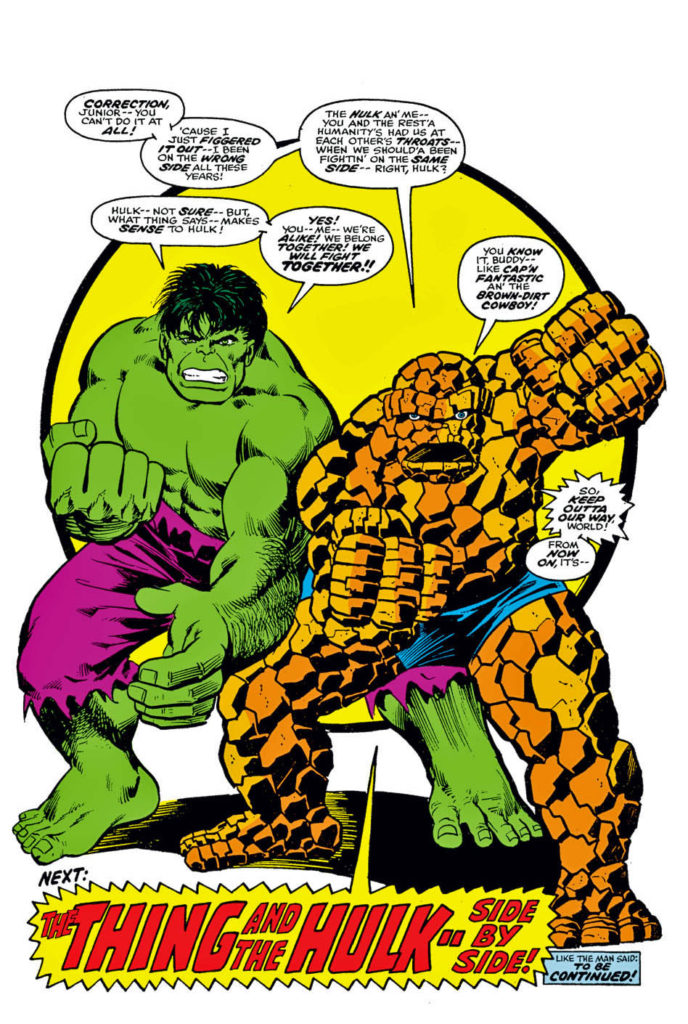Mike Ploog — Marvel Goes Ape
Planet Of The Apes #3, December 1974

Things you learn.
According to Roy Thomas, in an editorial in the first issue of Planet of the Apes magazine, it was my friend and old Topps colleague Len Brown who persuaded Roy — and Marvel — to acquire the POTA license. Roy’s article on that process is worth a read.
Another fun fact: Mike Ploog insisted he draw the series, which was developed as a sequel to the fifth and final original Apes film, Battle of the Planet of the Apes.
And that’s cool, because Mike provides us with some very lovely artwork throughout, including this terrific page.
Mutants! Monkeys! Maniacs! What more could you ask for?
(Special note: Pretty much everyone was late to the party on the POTA license, but when they finally got there in time for the final film and then the TV series, It became, as they say, “a thing.”)
